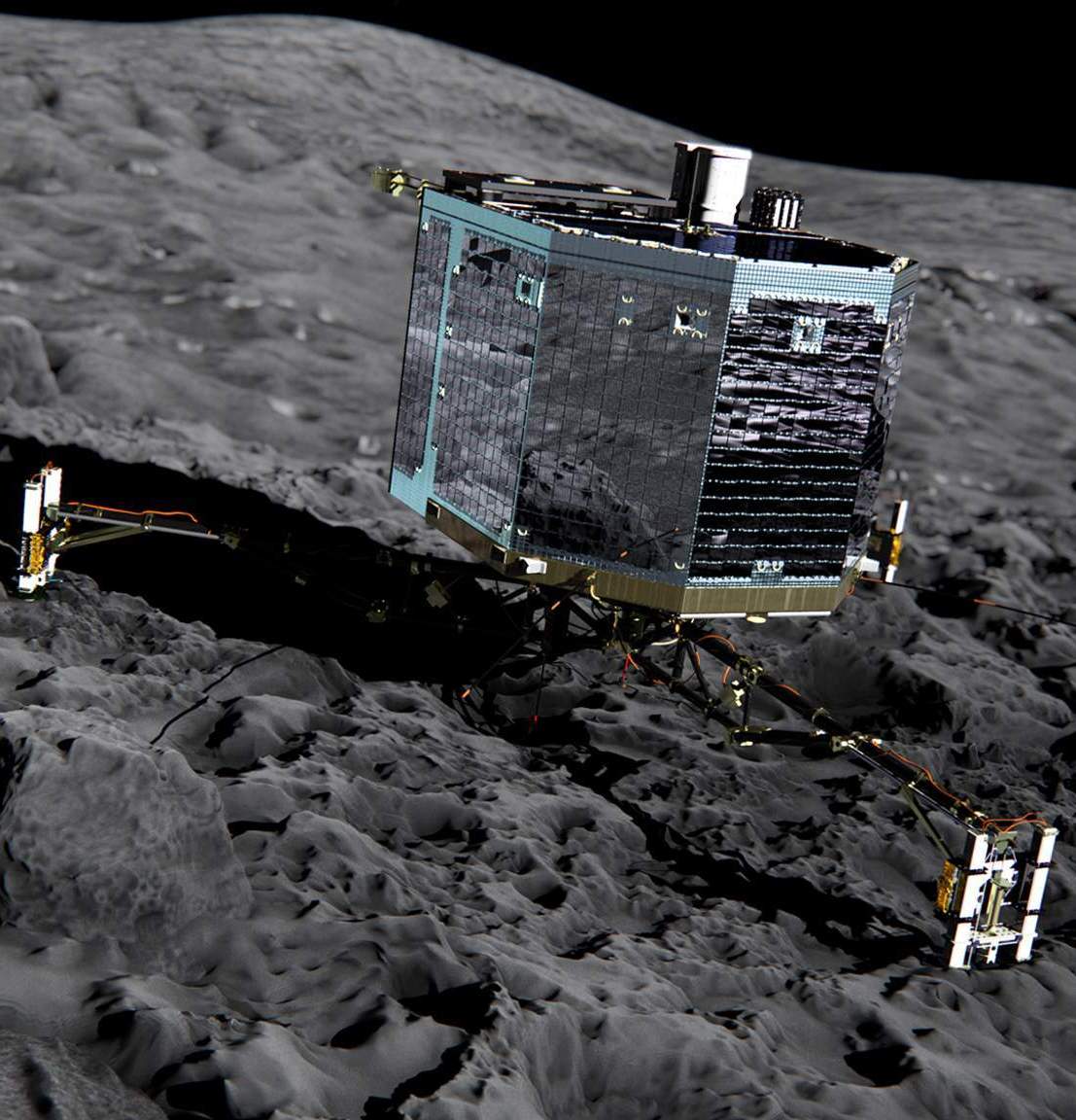‘Hello Earth! Can you hear me?’: Europe’s Philae comet lander wakes up
The European Space Agency says the comet probe Philae has woken up seven months after scientists lost contact. Philae, a 100kg robot lab, was dropped on to the surface of Comet 67P by mothership, Rosetta, last November after a 10-year trek piggy-backing on Rosetta. Philae’s mission was to unveil the secrets of comets which some experts believe may hold the secrets to how the Solar System was formed. But instead of attaching itself to the iceball’s surface, the little lander bounced and settled at an angle in a dark ditch. It worked for 60 hours before going to sleep when its solar-powered battery ran flat but the president of France’s CNES space agency said the comet had sparked into life.
We received new signals from (Philae) for a period of two minutes, as well as 40 seconds worth of data.
President of France’s CNES space agency, Jean-Yves Le Gall
Some of the data was historical, indicating that Philae may have been awake earlier but unable to communicate with Rosetta. The space probe’s Twitter account, run by the Lander Control Centre LCC in Cologne, announced Philae’s revival, tweeting after a seven-month silence: “Hello Earth! Can you hear me?” Then in a tweet directed at the account for its mothership, the space agency wrote: “Hello @ESA_Rosetta! I’m awake! How long have I been asleep?” After a reply saying the rest had been seven months, the Philae account tweeted back: “Wow @ESA_Rosetta! That’s a long time… time for me to get back to work! #Lifeonacomet”. In November the Rosetta Mission had successfully landed the probe on comet 67P/Churyumov-Gerasimenko amidst much jubilation and fist-pumping in the European Space Agency’s headquarters.
Philae is doing very well. It has an operating temperature of -35C and has 24 watts available.
Philae project manager Stephan Ulamec

Technology probe philae